Structural Health Monitoring of Glass Fiber-Reinforced Polymer Laminates with Carbon Nanotube-Coated Glass Fiber Sensing Layer after Low-Velocity Impact Using Electrical Resistance Tomography
Abstract
:1. Introduction
2. Experimental Method
2.1. Materials
2.2. Preparation of MWCNT-Modified Glass Fiber
2.3. Fabrication of GFRP Laminates with MWCNT-GF
2.4. Low-Velocity Impact Test
2.5. ERT Monitoring Technology
3. Results and Discussion
3.1. Analysis of Conductivity and Surface Morphology of MWCNT-GF
3.2. Low-Velocity Impact Test Results
3.3. Damage Monitoring of MWCNT-GF
4. Conclusions
Author Contributions
Funding
Data Availability Statement
Conflicts of Interest
References
- Alam, P.; Mamalis, D.; Robert, C.; Floreani, C.; Brádaigh, C.M.Ó. The fatigue of carbon fibre reinforced plastics—A review. Compos. Part B Eng. 2019, 166, 555–579. [Google Scholar] [CrossRef]
- Kazemianfar, B.; Nami, M.R. Influence of oblique low velocity impact on damage behavior of 2D and 3D woven composites: Experimental and numerical methods. Thin-Walled Struct. 2021, 167, 108253. [Google Scholar] [CrossRef]
- Zhang, X.; Hu, J.; Qian, R.; Wang, Y.; Yu, S.; Huang, Y.; Chen, Z.; Chen, D.; Zhang, S.; EShun, F.T.; et al. Experimental and numerical research on opening size effect of novel short fiber reinforced composite laminates. Results Phys. 2023, 46, 106303. [Google Scholar] [CrossRef]
- Huang, Y.; EShun, F.T.; Hu, J.; Zhang, X.; Zhao, J.; Zhang, S.; Qian, R.; Chen, Z.; Chen, D. Research on low-velocity impact response of novel short-fiber-reinforced composite laminates. Polymers 2023, 15, 840. [Google Scholar] [CrossRef] [PubMed]
- Huang, Y.; Yang, H.; Wang, B.; Hu, J.; Lu, W.; Li, M.; Zhao, J. Effect of slit size on low-velocity impact behavior of composite laminates with regularly arrayed chopped strands: Experimental and numerical analysis. Polym. Compos. 2024, 45, 9335–9349. [Google Scholar] [CrossRef]
- Wang, C.; Su, D.; Xie, Z.; Zhang, K.; Wu, N.; Han, M.; Zhou, M. Low-velocity impact response of 3D woven hybrid epoxy composites with carbon and heterocyclic aramid fibres. Polym. Test. 2021, 101, 107314. [Google Scholar] [CrossRef]
- Nguyen, V.H.; Lagardère, M.; Park, C.H.; Panier, S. Permeability of natural fiber reinforcement for liquid composite molding processes. J. Mater. Sci. 2014, 49, 6449–6458. [Google Scholar] [CrossRef]
- Sannamani, M.; Gao, J.; Chen, W.W.; Tallman, T.N. Damage detection in non-planar carbon fiber-reinforced polymer laminates via electrical impedance tomography with surface-mounted electrodes and directional sensitivity matrices. Compos. Sci. Technol. 2022, 224, 109429. [Google Scholar] [CrossRef]
- Zhao, B.B.; Cheng, Z.F.; Zhu, Y.F.; Lei, L.L.; Wei, Z.B.; Ji, C.; Yu, T.; Fan, J.H.; Yang, W.D.; Li, Y. Self-diagnosis of structural damage in self-powered piezoelectric composites. Compos. Sci. Technol. 2024, 252, 110619. [Google Scholar] [CrossRef]
- Lu, S.; Jiang, X.; Wang, S.; Wang, X.; Zhang, L. Application of carbon nanosensors in monitoring the manufacturing and service processes of composite materials. J. Aeronaut. Mater. 2021, 41, 36–51. [Google Scholar]
- Kang, G.H.; Jang, J.Y.; Cho, G.; Lee, I.Y.; Park, Y.B. Real-time structural health monitoring of carbon fiber-reinforced plastic sandwich structures with carbon nanotube-dispersed core using electromechanical behavior data. Polym. Test. 2024, 136, 108471. [Google Scholar] [CrossRef]
- Liu, Y.; Li, J.; Kuang, Y.; Liu, Z.; Zhang, Z.; Chen, X. Effect of carbon nanotubes modification on bending fatigue properties of carbon fiber reinforced polyimide composites. Int. J. Fatigue 2023, 175, 107814. [Google Scholar] [CrossRef]
- Brunella, V.; Rossatto, B.G.; Scarano, D.; Cesano, F. Thermal, Morphological, Electrical Properties and Touch-Sensor Application of Conductive Carbon Black-Filled Polyamide Composites. Nanomaterials 2021, 11, 3103. [Google Scholar] [CrossRef] [PubMed]
- Chen, Z.; Guan, M.; Cheng, Y.; Li, H.; Ji, G.; Chen, H.; Fu, X.; Awuye, D.E.; Zhu, Y.; Yin, X.; et al. Boehmite-enhanced poly (vinylidene fluoride-co-hexafluoropropylene)/polyacrylonitrile (PVDF-HFP/PAN) coaxial electrospun nanofiber hybrid membrane: A superior separator for lithium-ion batteries. Adv. Compos. Hybrid Mater. 2023, 6, 219. [Google Scholar] [CrossRef]
- Anirudh, S.; Aruna Prabha, K.; Bhanu Murthy, S.; Chennakesava Rao, B. Enhancement of mechanical properties of matrix by functionalized Multi-Wall Carbon Nanotubes (MWCNT) in composite material. Mater. Today Proc. 2023, 92, 1186–1192. [Google Scholar] [CrossRef]
- Chawraba, K.; Nassereddine, A.; Sleiman, H.; Toufaily, J.; Lalevee, J.; Hamieh, T. Novel Approach for Obtaining Nanocomposites with a High Percentage of Mwcnts Reinforcement and Elastomeric Materials PU/MWCNT. J. Mater. Sci. Eng. 2021, 10, 4. [Google Scholar]
- Wang, Q.; Tian, Y.; Duongthipthewa, A.; Zhang, J.; Liu, M.; Su, Z.; Zhou, L. An embedded non-intrusive graphene/epoxy broadband nanocomposite sensor co-cured with GFRP for in situ structural health monitoring. Compos. Sci. Technol. 2023, 236, 109995. [Google Scholar] [CrossRef]
- Hamieh, T. Thermal Surface Properties, London Dispersive and Polar Surface Energy of Graphene and Carbon Materials Using Inverse Gas Chromatography at Infinite Dilution. Molecules 2024, 29, 2871. [Google Scholar] [CrossRef]
- Marino, S.G.; Košťáková, E.K.; Czél, G. Development of pseudo-ductile interlayer hybrid composites of standard thickness plies by interleaving polyamide 6 nanofibrous layers. Compos. Sci. Technol. 2023, 234, 109924. [Google Scholar] [CrossRef]
- Ma, P.C.; Tang, B.Z.; Kim, J.-K. Effect of CNT decoration with silver nanoparticles on electrical conductivity of CNT-polymer composites. Carbon 2008, 46, 1497–1505. [Google Scholar] [CrossRef]
- Kim, K.J.; Kim, J.; Yu, W.-R.; Youk, J.H.; Lee, J. Improved tensile strength of carbon fibers undergoing catalytic growth of carbon nanotubes on their surface. Carbon 2013, 54, 258–267. [Google Scholar] [CrossRef]
- Gojny, F.H.; Wichmann, M.H.G.; Köpke, U.; Fiedler, B.; Schulte, K. Carbon nanotube-reinforced epoxy-composites: Enhanced stiffness and fracture toughness at low nanotube content. Compos. Sci. Technol. 2004, 64, 2363–2371. [Google Scholar] [CrossRef]
- Arai, M.; Noro, Y.; Sugimoto, K.-I.; Endo, M. Mode I and mode II interlaminar fracture toughness of CFRP laminates toughened by carbon nanofiber interlayer. Compos. Sci. Technol. 2008, 68, 516–525. [Google Scholar] [CrossRef]
- Zheng, Z.; Xiao, Y.; Meng, X.; Wang, S.; Chen, Y.; Wang, Q.; Wang, M.; Wei, H.; Wang, Q. Interfacial Properties of Epoxy Resin/Carbon Fiber Composite Modified by Carbon Nanotubes. Eng. Plast. Appl. 2020, 48, 118–122. [Google Scholar]
- Yu, Y.; Shi, Y.; Kurita, H.; Jia, Y.; Wang, Z.; Narita, F. Carbon Fiber-Reinforced Piezoelectric Nanocomposites: Design, Fabrication and Evaluation for Damage Detection and Energy Harvesting. Compos. Part A Appl. Sci. Manuf. 2023, 172, 107587. [Google Scholar] [CrossRef]
- Boztepe, S.; Liu, H.; Heider, D.; Thostenson, E.T. Novel carbon nanotube interlaminar film sensors for carbon fiber composites under uniaxial fatigue loading. Compos. Struct. 2018, 189, 340–348. [Google Scholar] [CrossRef]
- Park, J.-M.; Kim, D.-S.; Lee, J.-R.; Kim, T.-W. Nondestructive damage sensitivity and reinforcing effect of carbon nanotube/epoxy composites using electro-micromechanical technique. Mater. Sci. Eng. C 2003, 23, 971–975. [Google Scholar] [CrossRef]
- Reghat, M.; Mirabedini, A.; Tan, A.M.; Weizman, Y.; Middendorf, P.; Bjekovic, R.; Hyde, L.; Antiohos, D.; Hameed, N.; Fuss, F.K.; et al. Graphene as a piezo-resistive coating to enable strain monitoring in glass fiber composites. Compos. Sci. Technol. 2021, 211, 108842. [Google Scholar] [CrossRef]
- Dhiwar, D.; Kumar Verma, S.; Gupta, N.; Agnihotri, P.K. Augmenting the fracture toughness and structural health monitoring capabilities in Kevlar/epoxy composites using carbon nanotubes. Eng. Fract. Mech. 2024, 297, 109877. [Google Scholar] [CrossRef]
- Yin, L.; Zhang, B.; Tian, M.; Ning, N.; Zhang, L.; Wang, W. Surface construction of ANF/CNT onto aramid fibers to enhance interfacial adhesion and provide real-time monitoring of deformation. Compos. Sci. Technol. 2022, 223, 109336. [Google Scholar] [CrossRef]
- Bregar, T.; An, D.; Gharavian, S.; Burda, M.; Durazo-Cardenas, I.; Thakur, V.K.; Ayre, D.; Słoma, M.; Hardiman, M.; McCarthy, C.; et al. Carbon nanotube embedded adhesives for real-time monitoring of adhesion failure in high performance adhesively bonded joints. Sci. Rep. 2020, 10, 16833. [Google Scholar] [CrossRef] [PubMed]
- Zarafshani, A.; Chatwin, C.; Bach, T.; Zheng, B. Using planar electrical impedance tomography as a structural health monitoring method to detect and evaluate the damage to CFRP composite. In Proceedings of the 2016 IEEE National Aerospace and Electronics Conference (NAECON) and Ohio Innovation Summit (OIS), Dayton, OH, USA, 26–29 July 2016. [Google Scholar]
- Fan, W. Damage detection of CFRP composites using open electrical impedance tomography. In Proceedings of the IEEE Instrumentation and Measurement Technology Conference, Pisa, Italy, 11–14 May 2015. [Google Scholar]
- Baltopoulos, A.; Polydorides, N.; Pambaguian, L.; Vavouliotis, A.; Kostopoulos, V. Exploiting carbon nanotube networks for damage assessment of fiber reinforced composites. Compos. Part B Eng. 2015, 76, 149–158. [Google Scholar] [CrossRef]
- Ju, L.; Zhang, W.; Wang, X.; Hu, J.; Zhang, Y. Aggregation kinetics of SDBS-dispersed carbon nanotubes in different aqueous suspensions. Colloids Surf. A 2012, 409, 159–166. [Google Scholar] [CrossRef]
- Wusiman, K.; Jeong, H.; Tulugan, K.; Afrianto, H.; Chung, H. Thermal performance of multi-walled carbon nanotubes (MWCNTs) in aqueous suspensions with surfactants SDBS and SDS. Int. Commun. Heat Mass Transf. 2013, 41, 28–33. [Google Scholar] [CrossRef]
- Jin, Q. On saturation of the discrepancy principle for nonlinear Tikhonov regularization in Hilbert spaces. Appl. Math. Lett. 2024, 156, 109150. [Google Scholar] [CrossRef]
- Long, H.; Han, B.; Tong, S. A proximal regularized Gauss-Newton-Kaczmarz method and its acceleration for nonlinear ill-posed problems. Appl. Numer. Math. 2020, 151, 301–321. [Google Scholar] [CrossRef]
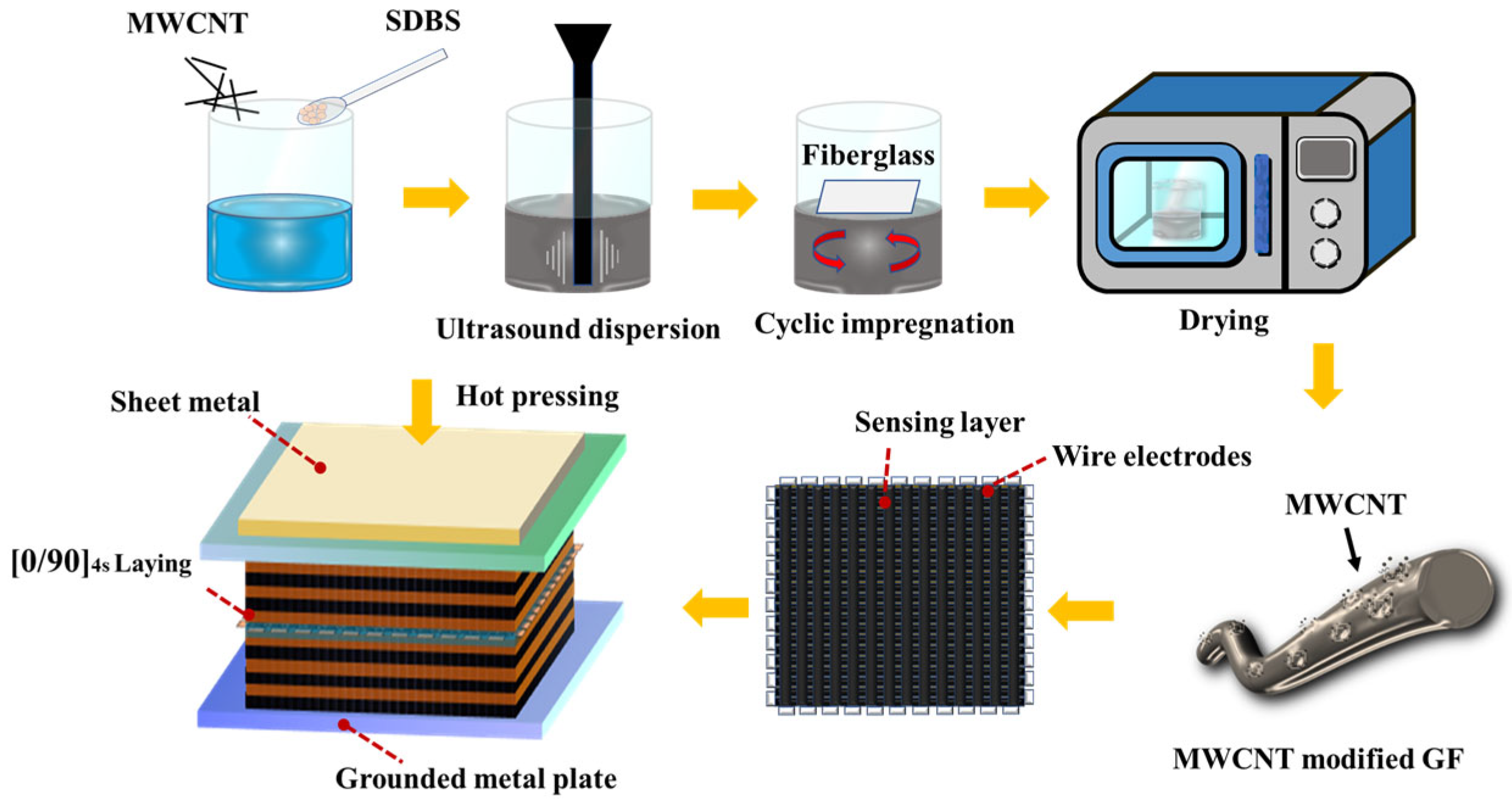
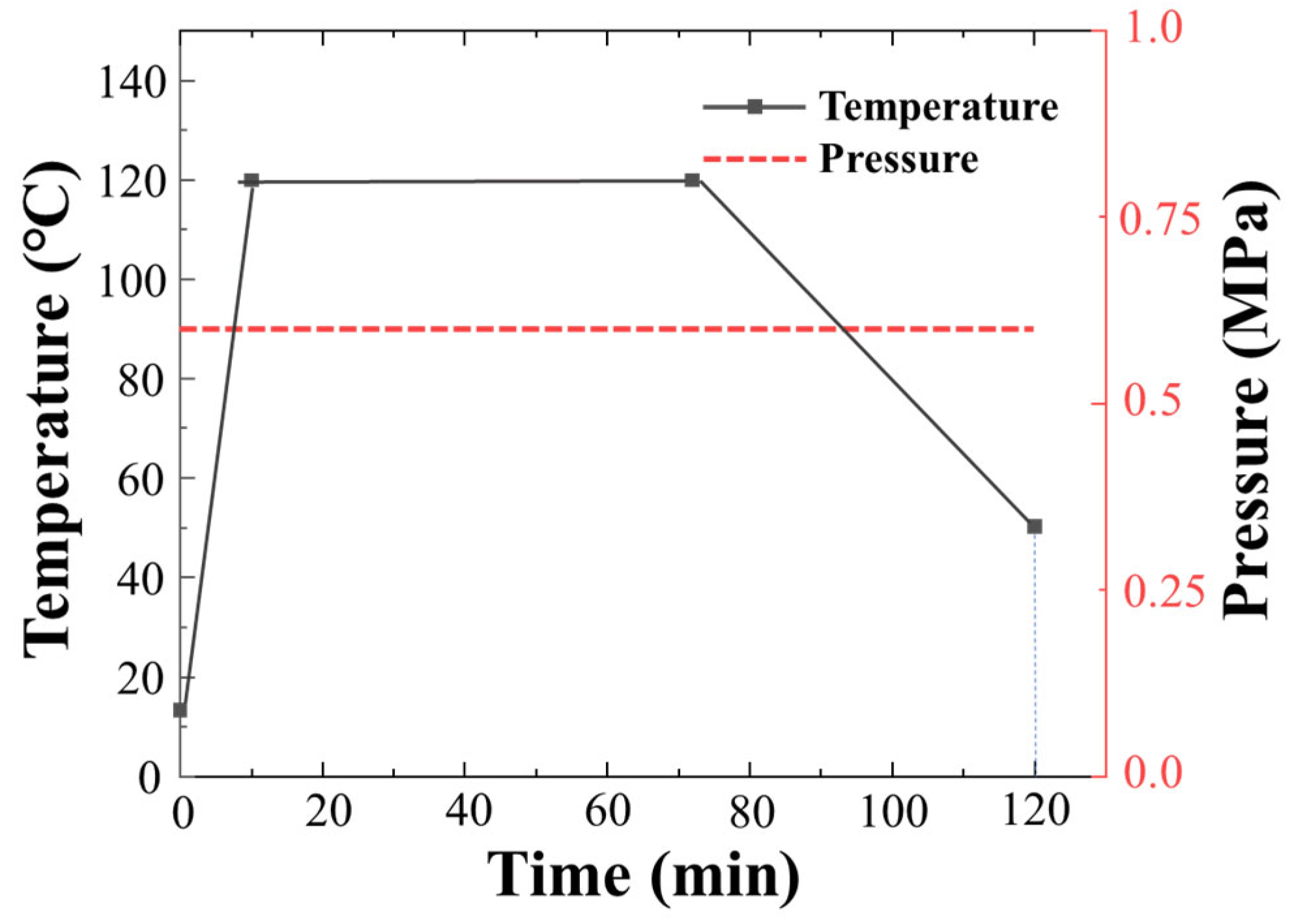
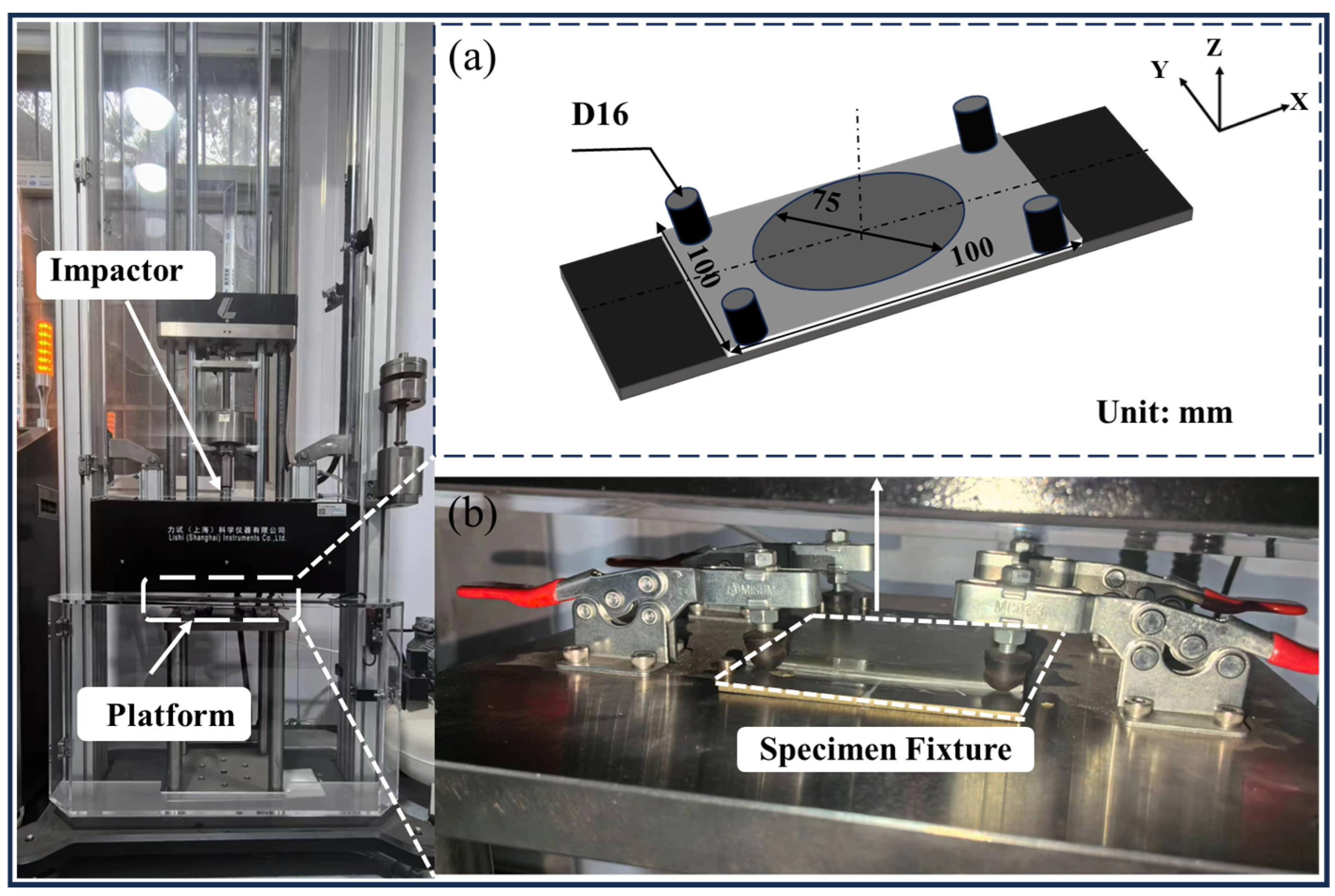

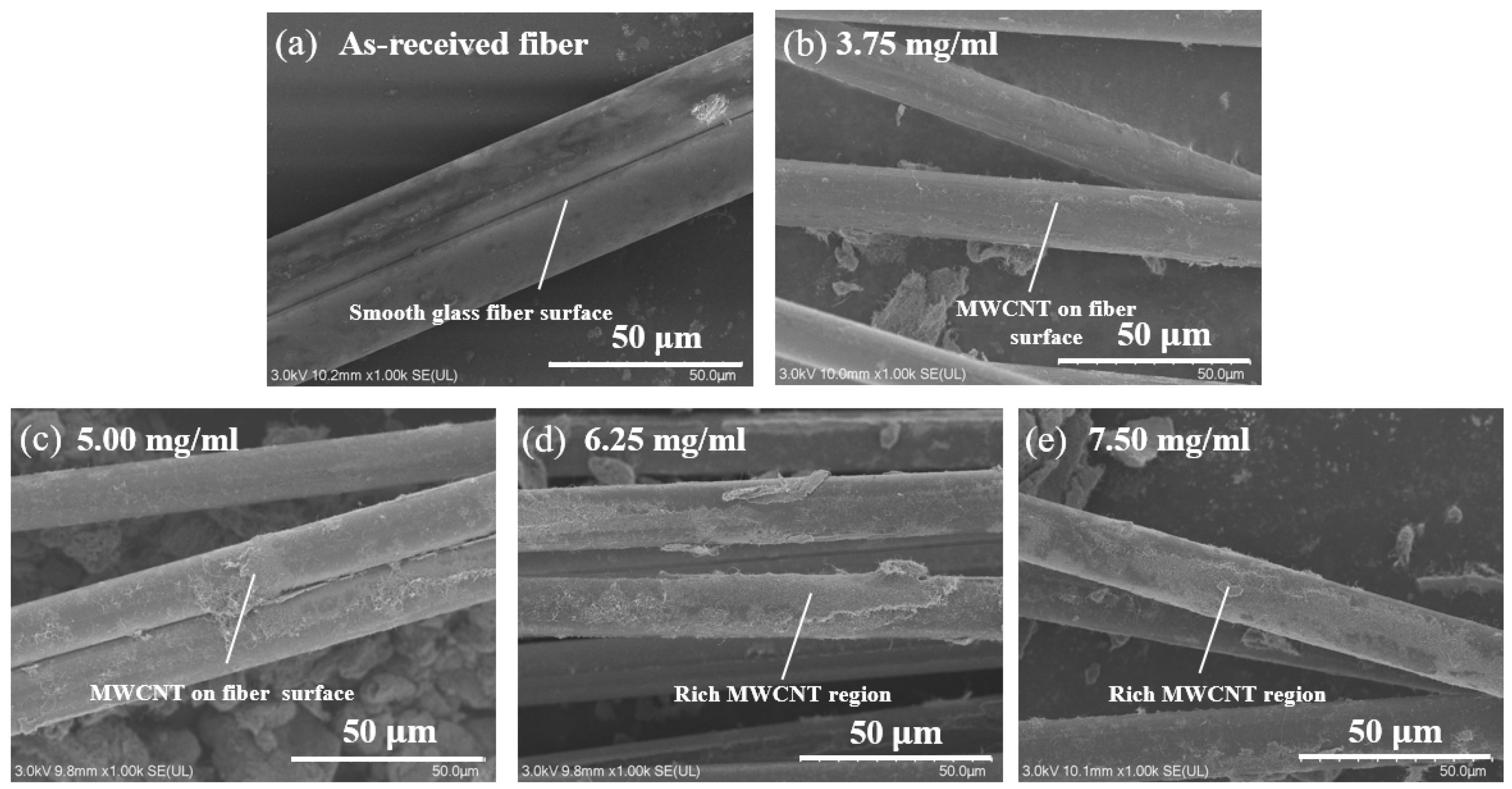
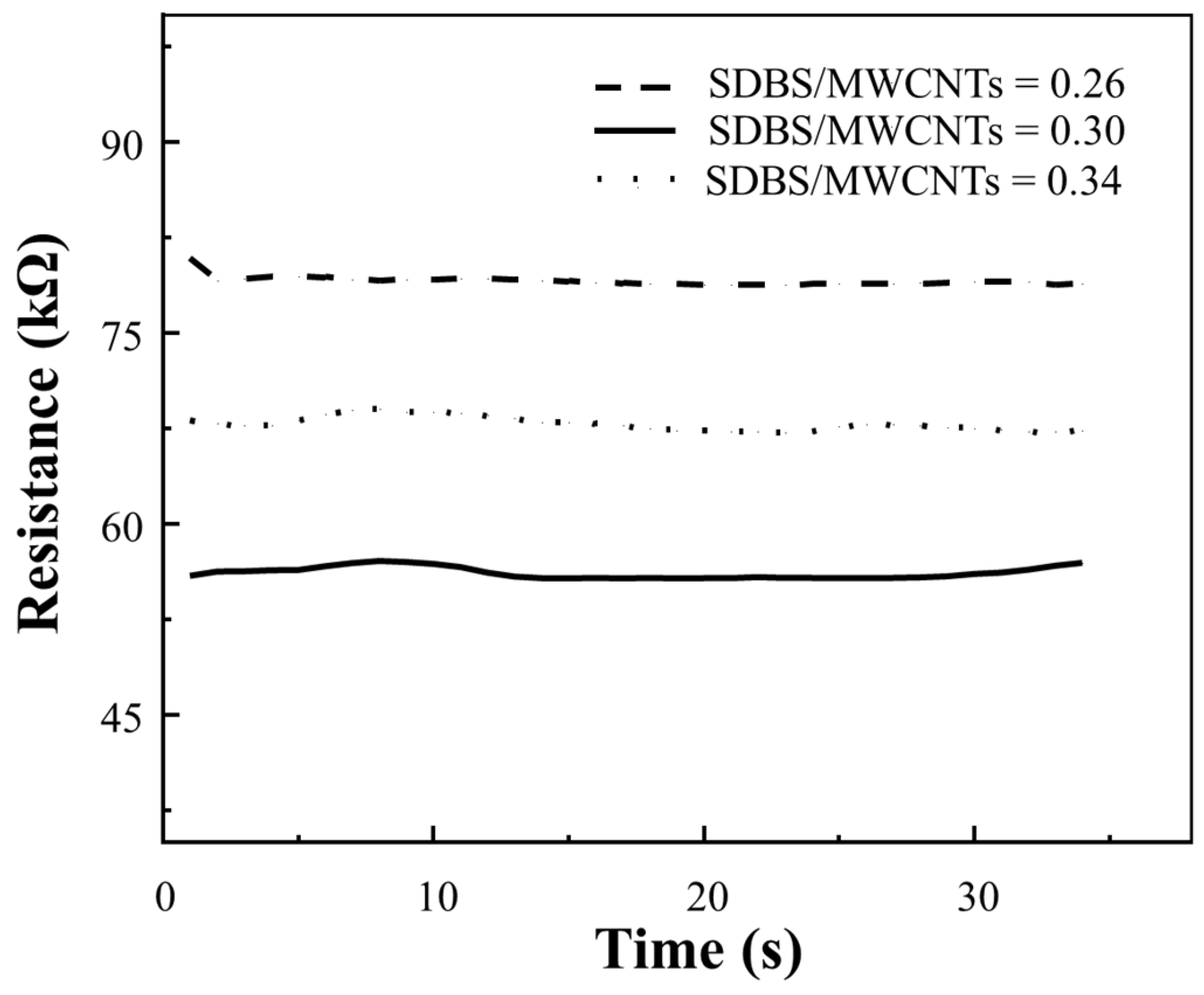
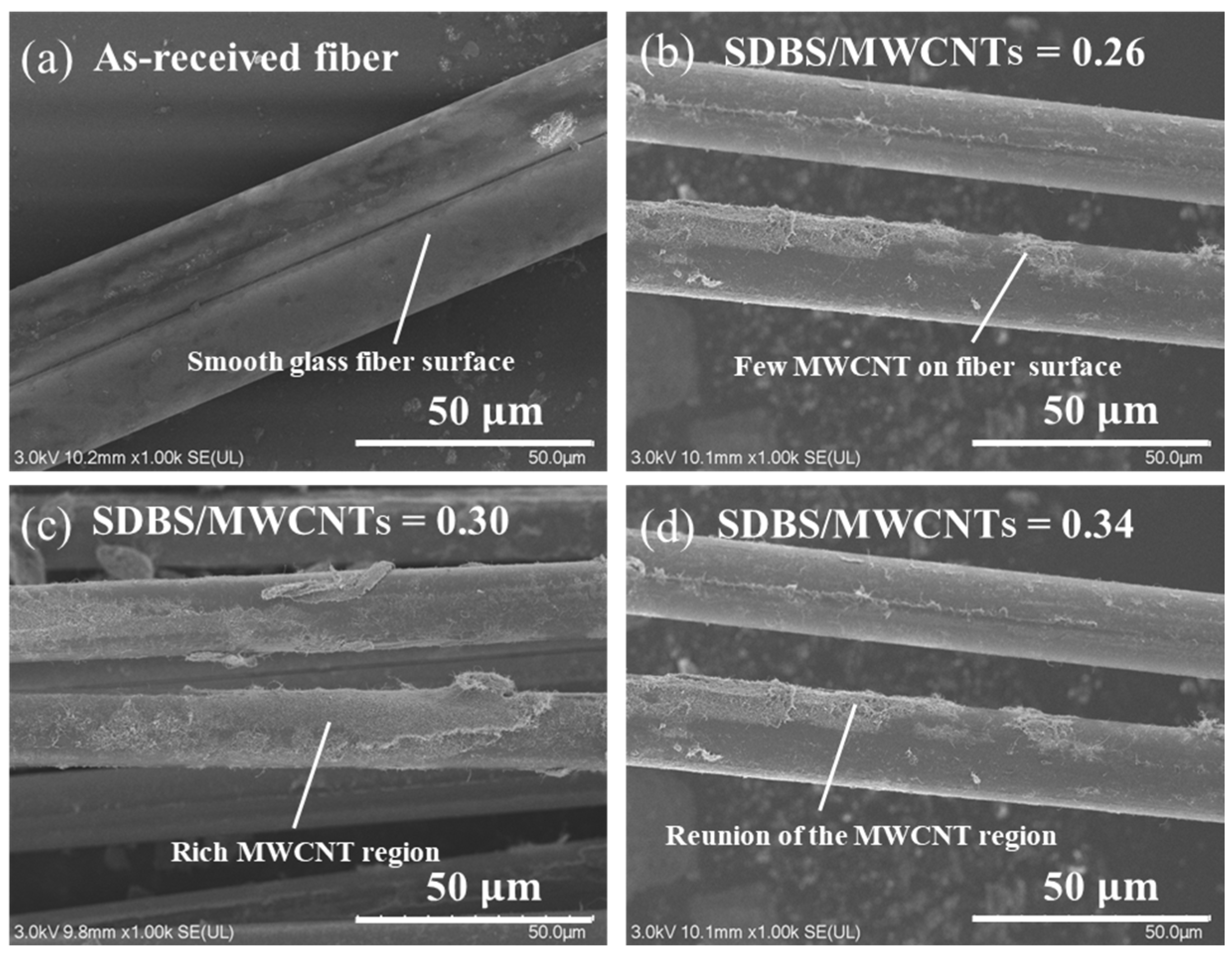

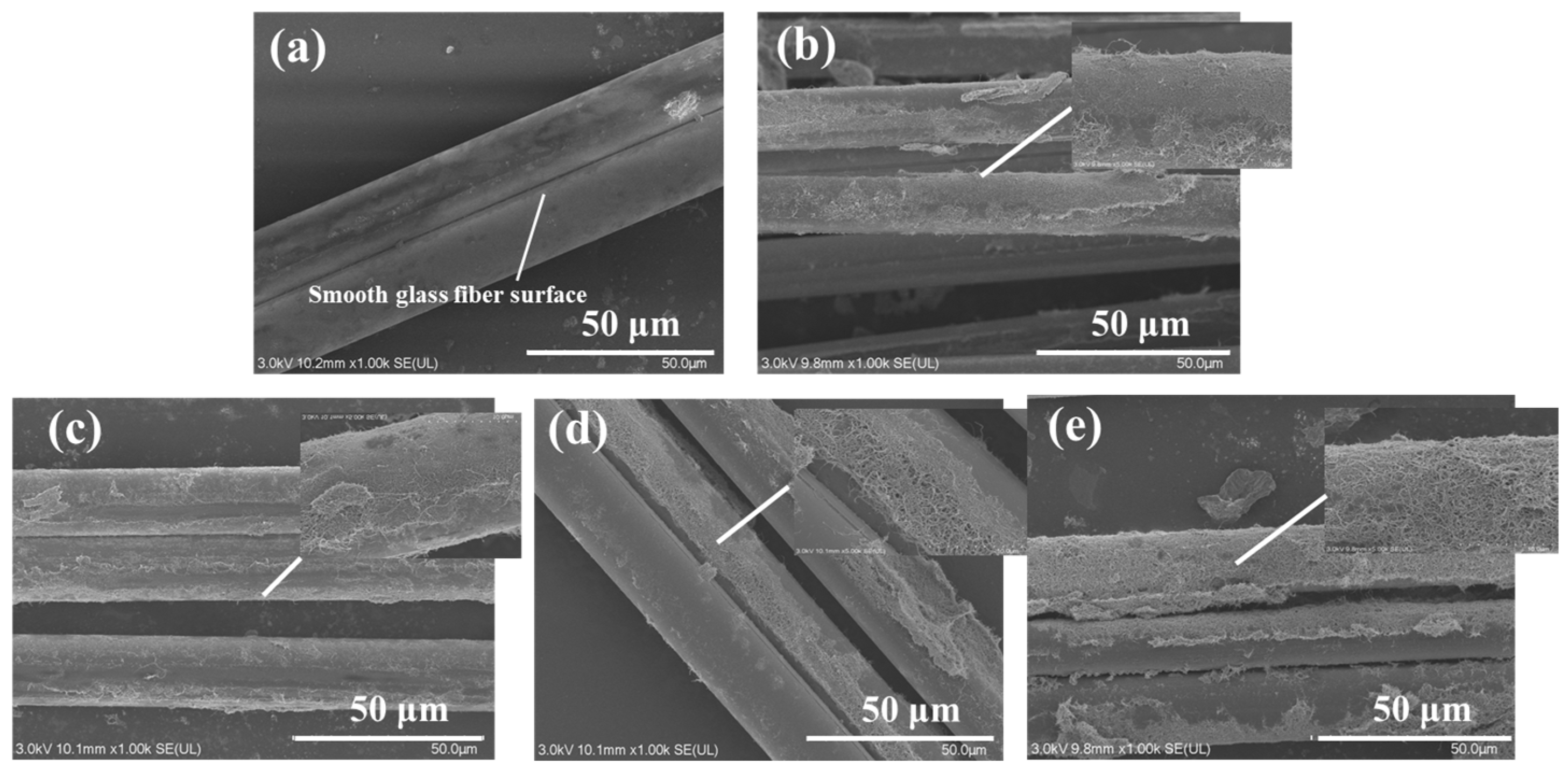
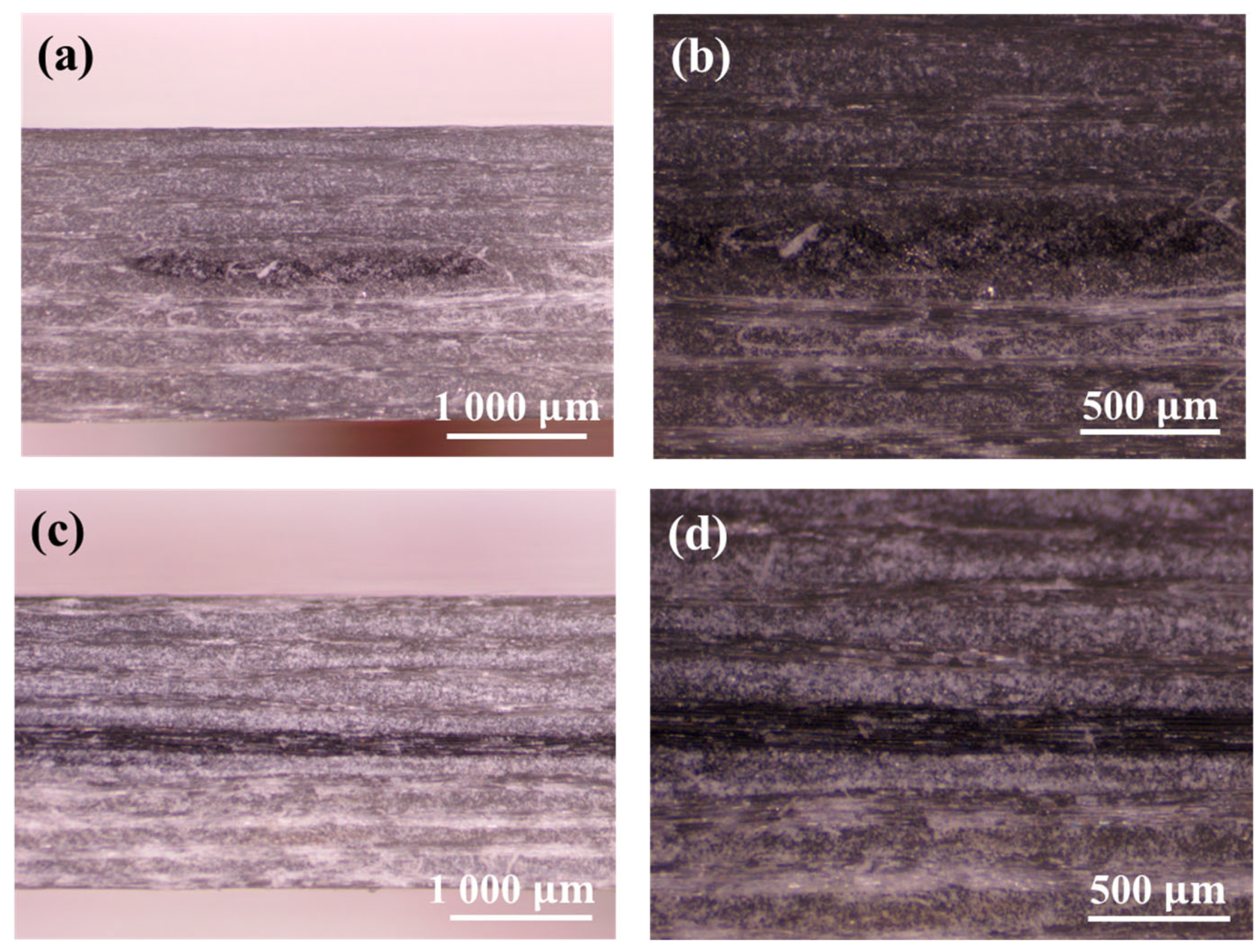


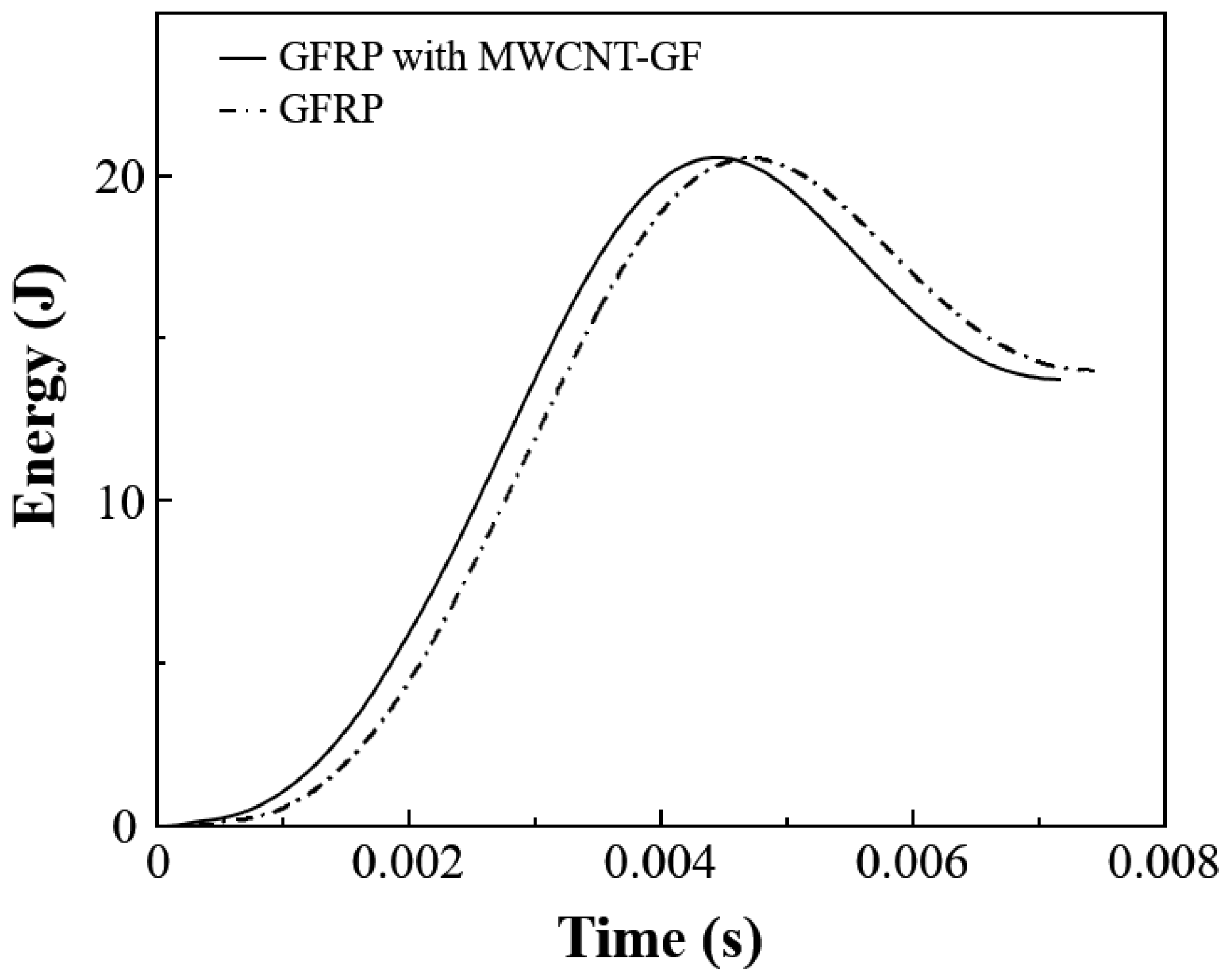
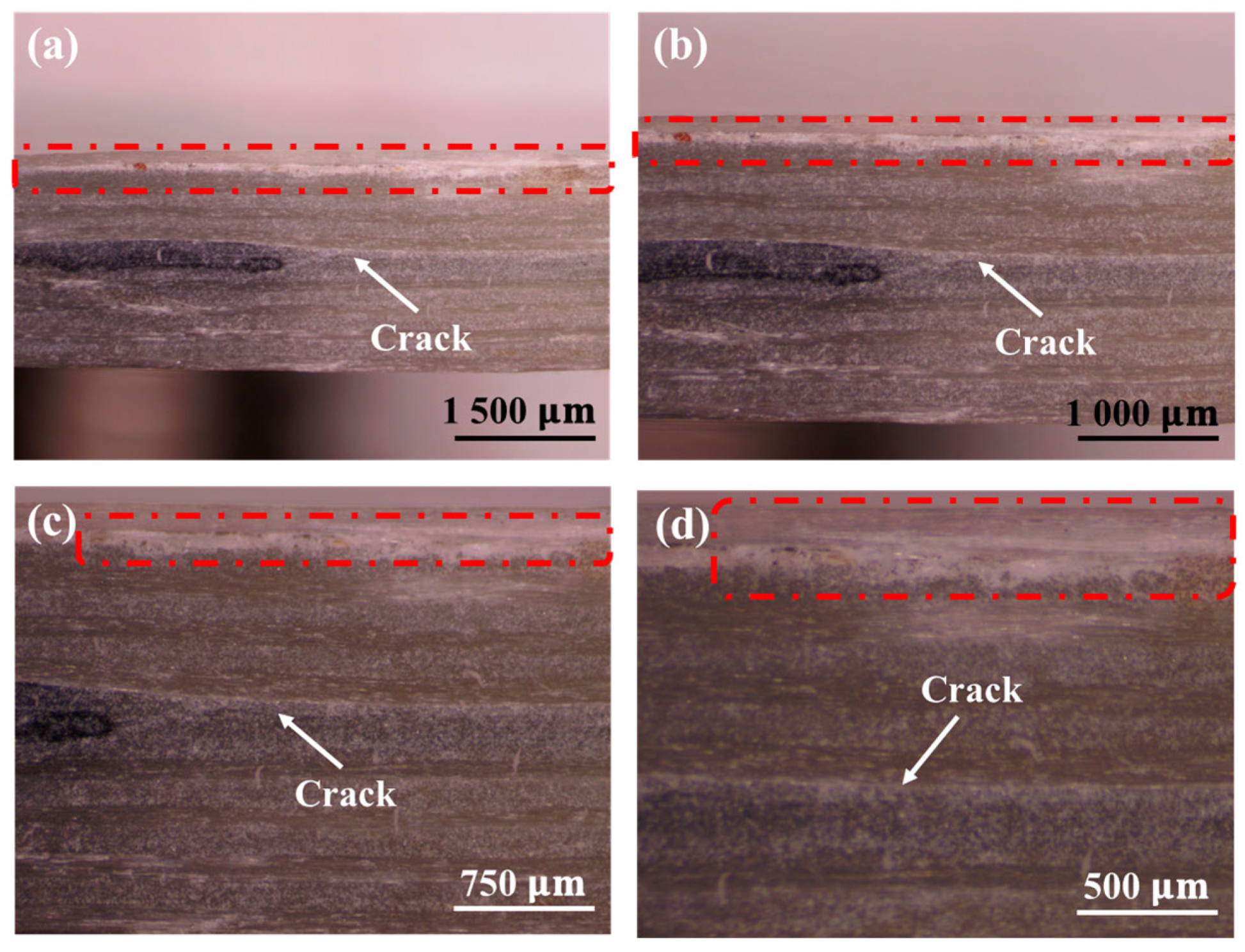
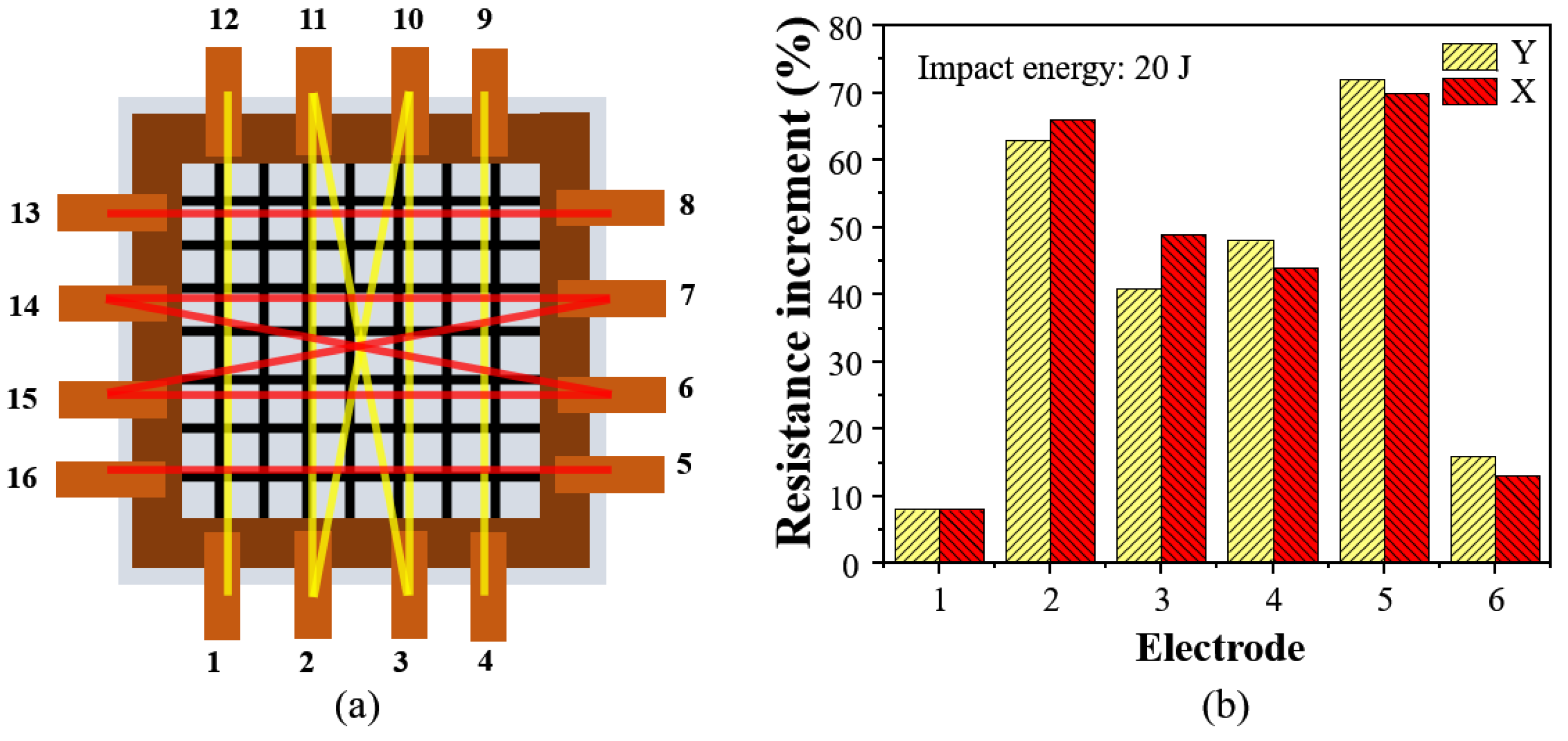
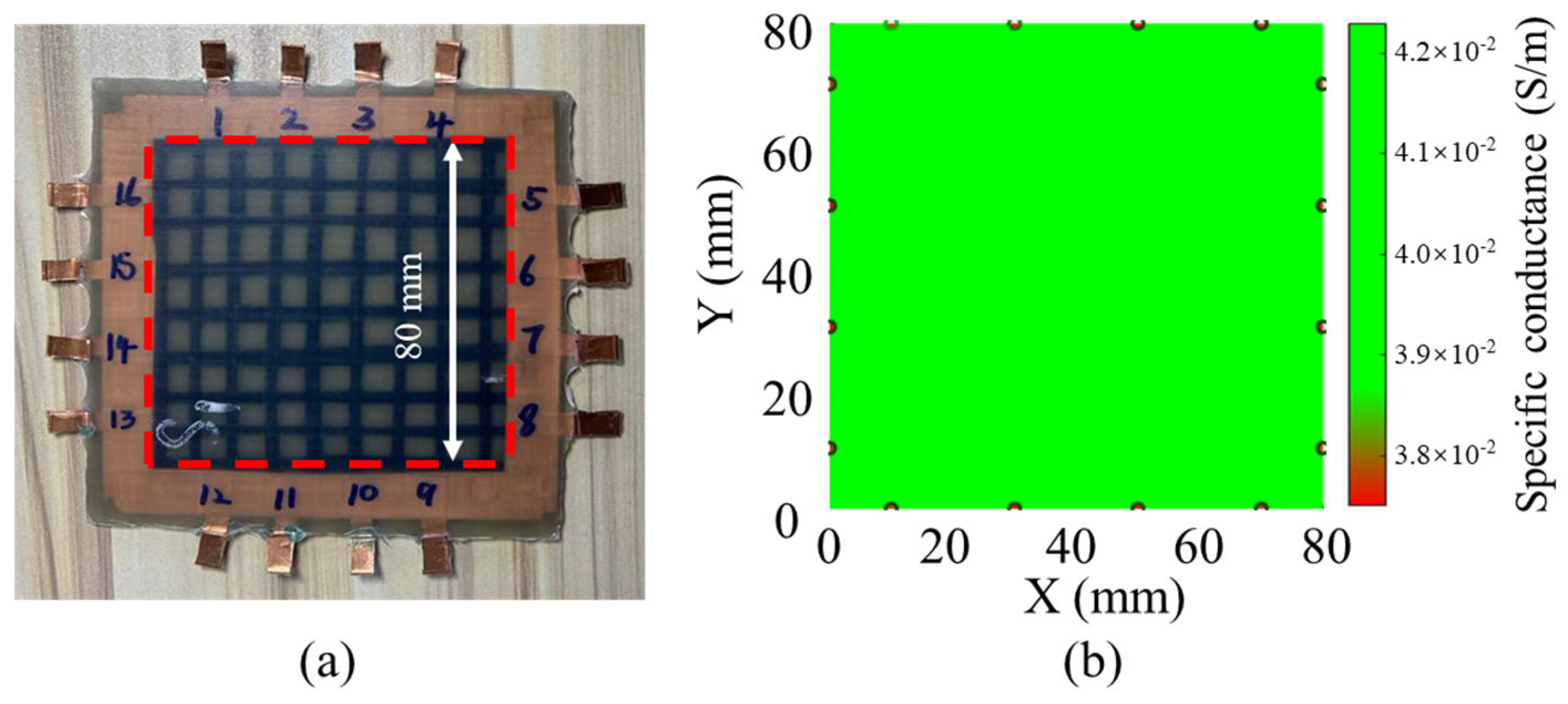
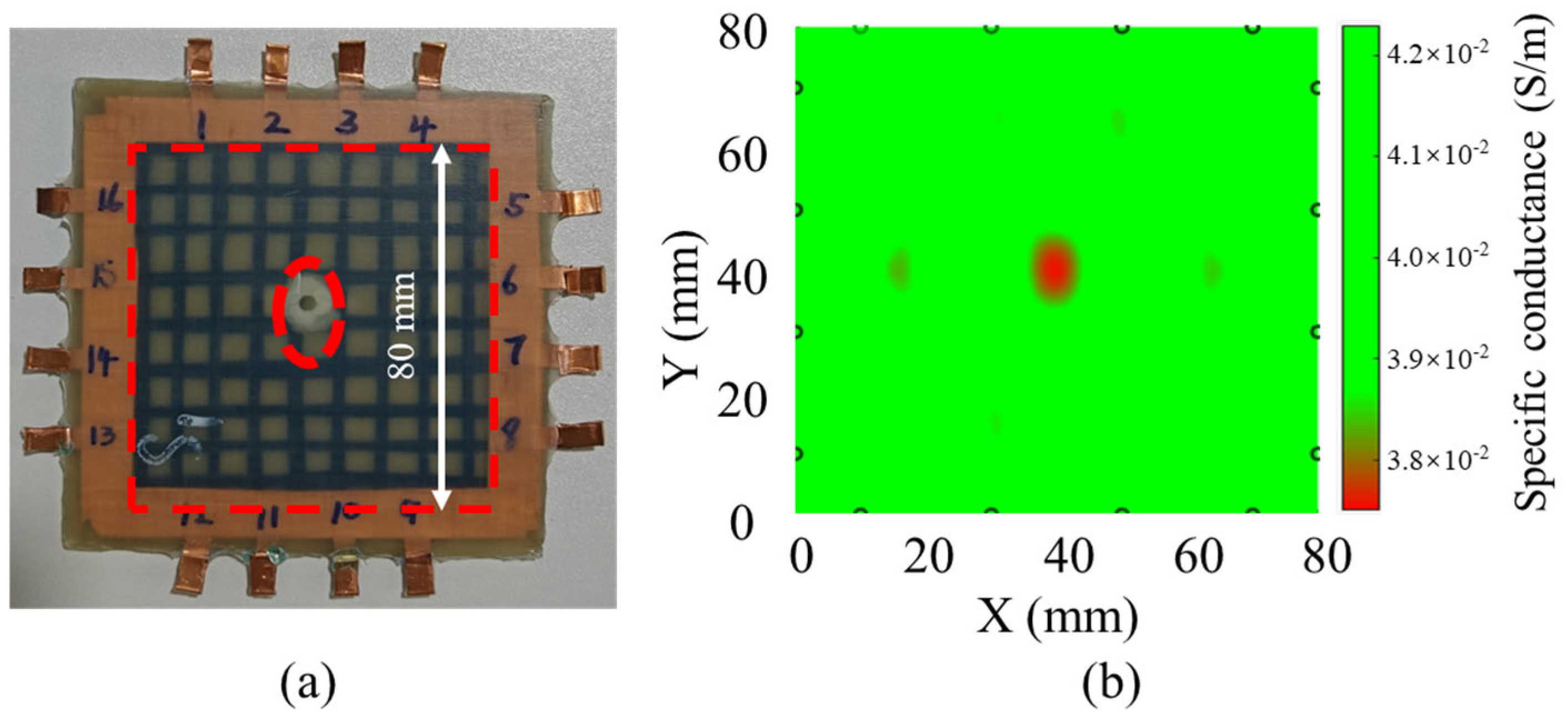
| Specimen Number | MWCNT (mg) | SDBS (mg) | Deionized Water (mL) | Number of Impregnation Cycles |
|---|---|---|---|---|
| A | 75 | 22.5 | 20 | 1 |
| B | 100 | 30 | 20 | 1 |
| C | 125 | 37.5 | 20 | 1 |
| D | 150 | 45 | 20 | 1 |
| E | 125 | 32.5 | 20 | 1 |
| F | 125 | 42.5 | 20 | 1 |
| G | 125 | 37.5 | 20 | 2 |
| H | 125 | 37.5 | 20 | 3 |
| I | 125 | 37.5 | 20 | 4 |
| Specimen | Average Peak Force (kN)/(SD) | Average Maximum Displacement (mm)/(SD) | Average Absorbed Energy (J)/(SD) |
|---|---|---|---|
| GFRP | 6.199 (0.071) | 8.224 (0.019) | 14.008 (0.255) |
| GFRP with MWCNT-GF | 6.289 (0.046) | 8.207 (0.018) | 14.038 (0.218) |
| Average Actual Damage Area (mm2)/(SD) | ERT Measuring Area (mm2)/(SD) | Error (%) |
|---|---|---|
| 146.135 (6.745) | 139.49 (5.843) | 4.55 |
Disclaimer/Publisher’s Note: The statements, opinions and data contained in all publications are solely those of the individual author(s) and contributor(s) and not of MDPI and/or the editor(s). MDPI and/or the editor(s) disclaim responsibility for any injury to people or property resulting from any ideas, methods, instructions or products referred to in the content. |
© 2024 by the authors. Licensee MDPI, Basel, Switzerland. This article is an open access article distributed under the terms and conditions of the Creative Commons Attribution (CC BY) license (https://creativecommons.org/licenses/by/4.0/).
Share and Cite
Zhao, Z.; Li, M.; Liu, Y.; Wang, A.; Zhou, B.; Hu, J. Structural Health Monitoring of Glass Fiber-Reinforced Polymer Laminates with Carbon Nanotube-Coated Glass Fiber Sensing Layer after Low-Velocity Impact Using Electrical Resistance Tomography. Nanomaterials 2024, 14, 1462. https://doi.org/10.3390/nano14171462
Zhao Z, Li M, Liu Y, Wang A, Zhou B, Hu J. Structural Health Monitoring of Glass Fiber-Reinforced Polymer Laminates with Carbon Nanotube-Coated Glass Fiber Sensing Layer after Low-Velocity Impact Using Electrical Resistance Tomography. Nanomaterials. 2024; 14(17):1462. https://doi.org/10.3390/nano14171462
Chicago/Turabian StyleZhao, Zijie, Minglong Li, Ya Liu, Anhua Wang, Biaojun Zhou, and Junfeng Hu. 2024. "Structural Health Monitoring of Glass Fiber-Reinforced Polymer Laminates with Carbon Nanotube-Coated Glass Fiber Sensing Layer after Low-Velocity Impact Using Electrical Resistance Tomography" Nanomaterials 14, no. 17: 1462. https://doi.org/10.3390/nano14171462







